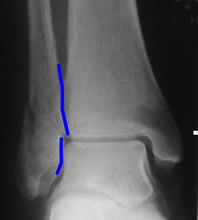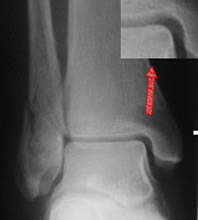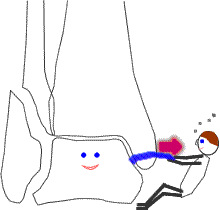Tibiotalar incongruity reduces contact area and increases localised loading in the remaining contact area.
There is an often-quoted paper (Ramsey and Hamilton 1967, confirmed by Lloyd et al 2006) which showed that 1mm of lateral talar displacement reduced contact area by 40%.
However, this was achieved by removing the normal stabilising structures and physically holding the talus laterally. As we saw above, in the presence of an intact deep deltoid ligament, axial loading pushes the talus into a position of congruence and maintains normal contact characteristics.








